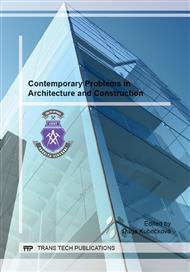p.76
p.80
p.86
p.92
p.98
p.113
p.119
p.124
p.130
Metallurgical By-Products in Earthworks, Hazards of their Utilization
Abstract:
Metallurgical by-products, primarily blast furnace and steel slag, have ranked among important alternative sources of fill as well as of material for the structural layers in highways. The properties of aggregates based on blast furnace or steel slag are determined to a decisive degree by the process employed by the specific ironmaker or steelmaker in question, or as the case may be, the specific producer of a nonferrous metal. Main hazards of metallurgical by-products are closely connected to their chemical and mineralogical composition and they are resulted in volume changes. Pavement deformation of the D47 motorway does not constitute Czech Republic’s first example of damage to an engineering structure due to volume changes of metallurgical by-products, but since this problem became widely known it drew greater attention to the problems of volume stability of the metallurgical by-products. Comparison of blast furnace slag, steel slag and other metallurgical by products parameters allow us to define the most hazardous material as steelworks waste. It is surprising that such material obtained a certificate based on which it was used as fill.
Info:
Periodical:
Pages:
98-109
Citation:
Online since:
October 2014
Authors:
Keywords:
Price:
Сopyright:
© 2014 Trans Tech Publications Ltd. All Rights Reserved
Share:
Citation:


